Showing Spotlights 1985 - 1992 of 2780 in category All (newest first):
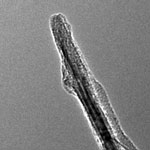 Carbon nanotubes have long been recognized as a promising material for the storage of hydrogen. Back in 2003, researchers first synthesized carbon nanoscrolls - another carbon nanomaterial similar to multi-walled carbon nanotubes - that was reported to be promising for hydrogen storage. Carbon nanoscrolls (CNS) can be obtained by rolling up a graphene sheet into a tubular structure. In contrast to multi-walled carbon nanotubes, with CNS one can vary the distance between layers, a property that might be crucial for gas storage applications. CNS are also expected to be useful in other applications, for instance in nanoelectronics, since they inherit some properties from both graphene and carbon nanotubes, e.g. high mechanical strength and carrier mobility. However, theoretical calculations also predict some unusual electronic and optical properties of CNS due to their unique topology. Previously, several methods have been developed to make CNS. However, they were hard to control, difficult to purify, and the fabricated scrolls were found to possess poor morphology. Now, researchers in Beijing have developed a simple and effective technique for fabricating high-quality CNS.
Carbon nanotubes have long been recognized as a promising material for the storage of hydrogen. Back in 2003, researchers first synthesized carbon nanoscrolls - another carbon nanomaterial similar to multi-walled carbon nanotubes - that was reported to be promising for hydrogen storage. Carbon nanoscrolls (CNS) can be obtained by rolling up a graphene sheet into a tubular structure. In contrast to multi-walled carbon nanotubes, with CNS one can vary the distance between layers, a property that might be crucial for gas storage applications. CNS are also expected to be useful in other applications, for instance in nanoelectronics, since they inherit some properties from both graphene and carbon nanotubes, e.g. high mechanical strength and carrier mobility. However, theoretical calculations also predict some unusual electronic and optical properties of CNS due to their unique topology. Previously, several methods have been developed to make CNS. However, they were hard to control, difficult to purify, and the fabricated scrolls were found to possess poor morphology. Now, researchers in Beijing have developed a simple and effective technique for fabricating high-quality CNS.
Jul 20th, 2009
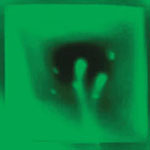 Controlling surface plasmons has become increasingly attractive for optical signal processing, surface enhanced spectroscopy and sensor nanotechnology. For instance, the role of surface plasmon resonance (SPR) on resonant transmission through nanohole arrays has motivated their application as surface-based biosensors. New work by a team of scientists in Canada has combined nanofluidics and nanoplasmonics for SPR sensing using flow-through nanohole arrays. This new format enables rapid transport of reactants to the active sensing surface and the array serves as a sieve. That is, the flow-through array efficiently collects and detects biomarkers from a very small volume of fluid.
Controlling surface plasmons has become increasingly attractive for optical signal processing, surface enhanced spectroscopy and sensor nanotechnology. For instance, the role of surface plasmon resonance (SPR) on resonant transmission through nanohole arrays has motivated their application as surface-based biosensors. New work by a team of scientists in Canada has combined nanofluidics and nanoplasmonics for SPR sensing using flow-through nanohole arrays. This new format enables rapid transport of reactants to the active sensing surface and the array serves as a sieve. That is, the flow-through array efficiently collects and detects biomarkers from a very small volume of fluid.
Jul 17th, 2009
 Nanotechnology plays, or rather: will play, a major role in technical and biological human enhancement. A recently released study commissioned by the European Parliament attempts to bridge the gap between visions on human enhancement and the relevant technoscientific developments. It outlines possible strategies of how to deal with human enhancement in a European context, identifying a reasoned pro-enhancement approach, a reasoned restrictive approach and a case-by-case approach as viable options for the EU. The authors propose setting up a European body for the development of a normative framework that guides the formulation of EU policies on human enhancement.
Nanotechnology plays, or rather: will play, a major role in technical and biological human enhancement. A recently released study commissioned by the European Parliament attempts to bridge the gap between visions on human enhancement and the relevant technoscientific developments. It outlines possible strategies of how to deal with human enhancement in a European context, identifying a reasoned pro-enhancement approach, a reasoned restrictive approach and a case-by-case approach as viable options for the EU. The authors propose setting up a European body for the development of a normative framework that guides the formulation of EU policies on human enhancement.
Jul 16th, 2009
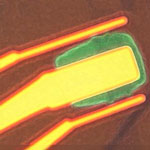 The most promising applications of graphene are in electronics, detectors, and thermal management. The first graphene field-effect transistors have already been demonstrated. At the same time, for any transistor to be useful for analog communication or digital applications, the level of the electronic low-frequency noise has to be decreased to an acceptable level. Low frequency electronic noise dominates the noise spectrum to a frequency of about 100 kHz. Despite the fact that modern electronic devices such as cell phones and radars operate at a much higher carrier frequency, the low frequency noise is extremely important. Due to unavoidable non-linearities in devices and systems, the low frequency noise gets up-converted, and contributes to the phase noise of the system, thus limiting its performance. It is not possible to build a communication system or detector based on graphene devices until the noise spectral density is decreased to the level comparable with the conventional state-of-the-art transistors. Researchers at the University of California - Riverside have now reported the results of experimental investigation of the low-frequency noise in a double-gate graphene transistors.
The most promising applications of graphene are in electronics, detectors, and thermal management. The first graphene field-effect transistors have already been demonstrated. At the same time, for any transistor to be useful for analog communication or digital applications, the level of the electronic low-frequency noise has to be decreased to an acceptable level. Low frequency electronic noise dominates the noise spectrum to a frequency of about 100 kHz. Despite the fact that modern electronic devices such as cell phones and radars operate at a much higher carrier frequency, the low frequency noise is extremely important. Due to unavoidable non-linearities in devices and systems, the low frequency noise gets up-converted, and contributes to the phase noise of the system, thus limiting its performance. It is not possible to build a communication system or detector based on graphene devices until the noise spectral density is decreased to the level comparable with the conventional state-of-the-art transistors. Researchers at the University of California - Riverside have now reported the results of experimental investigation of the low-frequency noise in a double-gate graphene transistors.
Jul 14th, 2009
 A very ambitious idea that has been kicked around for the past couple of years has gained a lot of momentum over the past few months. The vision that, if realized, would be a true energy revolution, is called Desertec and would amount to the biggest solar energy project of all times. The project, if realized, will cost 400-500 billion euros ($550-700 bn) and deliver its first energy in about 10 years. The basic idea is to install a huge network of concentrating solar-thermal power plants in the Sahara desert and build a network of High-Voltage Direct Current transmission lines to carry the electricity to Europe. The Desertec concept describes the perspective of a sustainable supply of electricity for Europe, the Middle East and North Africa up to the year 2050. By then, it could satisfy as much as 15 percent of the European Union's power needs. It shows that a transition to competitive, secure and compatible supply is possible using renewable energy sources and efficiency gains, and fossil fuels as backup for balancing power. Also, the technology exists today - it's the scale of the vision that's revolutionary.
A very ambitious idea that has been kicked around for the past couple of years has gained a lot of momentum over the past few months. The vision that, if realized, would be a true energy revolution, is called Desertec and would amount to the biggest solar energy project of all times. The project, if realized, will cost 400-500 billion euros ($550-700 bn) and deliver its first energy in about 10 years. The basic idea is to install a huge network of concentrating solar-thermal power plants in the Sahara desert and build a network of High-Voltage Direct Current transmission lines to carry the electricity to Europe. The Desertec concept describes the perspective of a sustainable supply of electricity for Europe, the Middle East and North Africa up to the year 2050. By then, it could satisfy as much as 15 percent of the European Union's power needs. It shows that a transition to competitive, secure and compatible supply is possible using renewable energy sources and efficiency gains, and fossil fuels as backup for balancing power. Also, the technology exists today - it's the scale of the vision that's revolutionary.
Jul 13th, 2009
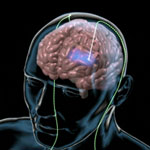 Neural interfaces used for such purposes as electroencephalography are noninvasive, but suffer from relatively poor spatial and temporal resolution of signals. The type of neural interface that uses electrodes inserted in the brain and measures neuronal activities is more effective, but might leave behind irreversible lesions in the cerebrum because of the need to implant electrodes in brain tissue. Other problems with this type of neural interface include the difficulty of obtaining information about individual organs. Believing that an effective solution to these problems lies in designing a neural interface that attaches not to the cerebrum but to peripheral nerves, scientists in Japan have developed an electrode for a peripheral nerve interface.
Neural interfaces used for such purposes as electroencephalography are noninvasive, but suffer from relatively poor spatial and temporal resolution of signals. The type of neural interface that uses electrodes inserted in the brain and measures neuronal activities is more effective, but might leave behind irreversible lesions in the cerebrum because of the need to implant electrodes in brain tissue. Other problems with this type of neural interface include the difficulty of obtaining information about individual organs. Believing that an effective solution to these problems lies in designing a neural interface that attaches not to the cerebrum but to peripheral nerves, scientists in Japan have developed an electrode for a peripheral nerve interface.
Jul 9th, 2009
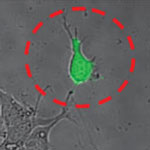 The Atomic Force Microscope (AFM) is a key tool for nanotechnology. This instrument has become the most widely used tool for imaging, measuring and manipulating matter at the nanoscale and in turn has inspired a variety of other scanning probe techniques. Originally the AFM was used to image the topography of surfaces, but by modifying the tip it is possible to measure other quantities (for example, electric and magnetic properties, chemical potentials, friction and so on), and also to perform various types of spectroscopy and analysis. Increasingly, the AFM is also becoming a tool for nanofabrication. Relatively new is the use of AFM in cell biology. Researchers in Switzerland have now demonstrated novel cell biology applications using hollow force-controlled AFM cantilevers - a new device they have called FluidFM.
The Atomic Force Microscope (AFM) is a key tool for nanotechnology. This instrument has become the most widely used tool for imaging, measuring and manipulating matter at the nanoscale and in turn has inspired a variety of other scanning probe techniques. Originally the AFM was used to image the topography of surfaces, but by modifying the tip it is possible to measure other quantities (for example, electric and magnetic properties, chemical potentials, friction and so on), and also to perform various types of spectroscopy and analysis. Increasingly, the AFM is also becoming a tool for nanofabrication. Relatively new is the use of AFM in cell biology. Researchers in Switzerland have now demonstrated novel cell biology applications using hollow force-controlled AFM cantilevers - a new device they have called FluidFM.
Jul 8th, 2009
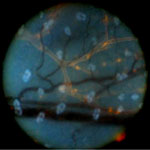 The usefulness of quantum dots comes from their peak emission frequency's extreme sensitivity to both the dot's size and composition. QDs have been touted as possible replacements for organic dyes in the imaging of biological systems, due to their excellent fluorescent properties, good chemical stability, broad excitation ranges and high photobleaching thresholds. In order for quantum dots to be useful as as nanoemitters for biological imaging, they need to be linked with a specific sensor molecule that exclusively targets a biomolecule of interest. These conjugations are usually made using small linker molecules although this often demands multistep procedures and may suffer from QD colloidal instabilities during the coupling reactions. Demonstrating hyaluronic acid-QD conjugates, researchers in Korea have now solved this problem by simple electrostatic conjugation which offers stable and size-tunable conjugates.
The usefulness of quantum dots comes from their peak emission frequency's extreme sensitivity to both the dot's size and composition. QDs have been touted as possible replacements for organic dyes in the imaging of biological systems, due to their excellent fluorescent properties, good chemical stability, broad excitation ranges and high photobleaching thresholds. In order for quantum dots to be useful as as nanoemitters for biological imaging, they need to be linked with a specific sensor molecule that exclusively targets a biomolecule of interest. These conjugations are usually made using small linker molecules although this often demands multistep procedures and may suffer from QD colloidal instabilities during the coupling reactions. Demonstrating hyaluronic acid-QD conjugates, researchers in Korea have now solved this problem by simple electrostatic conjugation which offers stable and size-tunable conjugates.
Jul 7th, 2009
 Carbon nanotubes have long been recognized as a promising material for the storage of hydrogen. Back in 2003, researchers first synthesized carbon nanoscrolls - another carbon nanomaterial similar to multi-walled carbon nanotubes - that was reported to be promising for hydrogen storage. Carbon nanoscrolls (CNS) can be obtained by rolling up a graphene sheet into a tubular structure. In contrast to multi-walled carbon nanotubes, with CNS one can vary the distance between layers, a property that might be crucial for gas storage applications. CNS are also expected to be useful in other applications, for instance in nanoelectronics, since they inherit some properties from both graphene and carbon nanotubes, e.g. high mechanical strength and carrier mobility. However, theoretical calculations also predict some unusual electronic and optical properties of CNS due to their unique topology. Previously, several methods have been developed to make CNS. However, they were hard to control, difficult to purify, and the fabricated scrolls were found to possess poor morphology. Now, researchers in Beijing have developed a simple and effective technique for fabricating high-quality CNS.
Carbon nanotubes have long been recognized as a promising material for the storage of hydrogen. Back in 2003, researchers first synthesized carbon nanoscrolls - another carbon nanomaterial similar to multi-walled carbon nanotubes - that was reported to be promising for hydrogen storage. Carbon nanoscrolls (CNS) can be obtained by rolling up a graphene sheet into a tubular structure. In contrast to multi-walled carbon nanotubes, with CNS one can vary the distance between layers, a property that might be crucial for gas storage applications. CNS are also expected to be useful in other applications, for instance in nanoelectronics, since they inherit some properties from both graphene and carbon nanotubes, e.g. high mechanical strength and carrier mobility. However, theoretical calculations also predict some unusual electronic and optical properties of CNS due to their unique topology. Previously, several methods have been developed to make CNS. However, they were hard to control, difficult to purify, and the fabricated scrolls were found to possess poor morphology. Now, researchers in Beijing have developed a simple and effective technique for fabricating high-quality CNS.
 Subscribe to our Nanotechnology Spotlight feed
Subscribe to our Nanotechnology Spotlight feed





